Legal/91�ȱ� Requirements
Every 91�ȱ� Building must have a building fire manual kept on site.
Although not specifically described in legislation you are unlikely to comply with legislation without this or something similar.
The building fire manual will normally be created and maintained by the department responsible for managing the site (typically 91�ȱ� Workplace) with input from the occupying departments.
Contents of Building Fire Manual
Date of Publication or Last Review
- Should be reviewed whenever the fire risk assessment is reviewed and whenever there is a significant change.
- The reason for the review should be stated.
Responsibilities for Fire Safety
- Sets out who is responsible for what in the building and for UK and Wales identifies “The responsible person(s)”
Building Fire Strategy
- Specifies in outline the key features of the strategy to safeguard life, protect property and avoid business interruption;
- Identifies both high hazard and business critical areas in the building;
- Describes contingency arrangements for recovery in the event of a fire.
Prevention of Fire
Describes building-specific arrangements in respect of the following matters (based on corporate policy where appropriate):
- fire prevention generally;
- smoking;
- electrical safety;
- security against arson;
- storage and use of flammable liquids and gases;
- housekeeping;
- storage and removal of waste;
- fire prevention in catering facilities;
- fire properties of furniture, furnishings and sets.
Fire Protection Measures
Describes
- Means of escape;
- Special measures (if any) for evacuation of people with special needs;
- Compartmentation;
- Escape lighting;
- Fire safety signs;
- Fire detection and alarm system;
- Firefighting equipment;
- Fire suppression systems;
- Smoke control systems;
- Facilities for the fire brigade.
- The description may take the form, at least in part, of a set of plans.
- Describes the following procedures:
- Action on discovering a fire;
- Action on hearing alert/evacuate signals;
- Action by those with special responsibilities;
- Evacuation of people with special needs;
- Any special arrangements for the evacuation and re-occupation of studios and other business critical areas during live transmissions (where relevant).
Training, Information and Fire Drills
Describes the safety arrangements for:
- General staff training;
- Fire warden training;
- Training of others with special responsibilities (including those designated to assist disabled people);
- Information for visitors;
- Instruction of contractors;
- Fire drills.
Testing and Servicing of Fire Protection Equipment
Describes the arrangements for:
- Routine testing (periodicity and responsibility);
- Periodic servicing (periodicity and responsibility);
- Response to faults.
Liaison with the Fire Brigade
Describes the arrangements for familiarisation visits.
Fire Safety Inspections and Audits
Describes the arrangements for:
- Checks by security patrols;
- Formal inspections;
- Periodic audits.
Fire Safety during Contractors' Operations
Describes the arrangements for:
- Fire precautions during construction and similar activities;
- Hot work permits in operation in premises;
- Other relevant permits;
- Maintenance of existing fire precautions during contracts.
Documentation and Records
- Provides information on the nature and location of all relevant records, fire risk assessments, log books, emergency packs, etc.
Recommended links
Fire topics
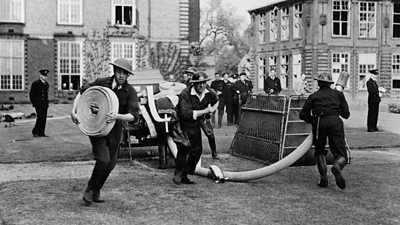 Building Fire ManualSets out the recommended contents of a building fire manual to be kept in each premises.
Building Fire ManualSets out the recommended contents of a building fire manual to be kept in each premises.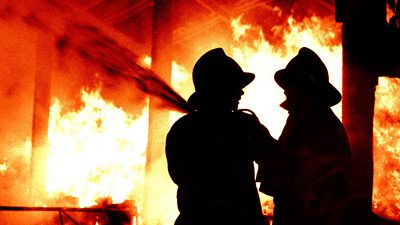 Fires - Buildings and BushfiresA guide to deployments of journalists and crew to large building fires and bushfires.
Fires - Buildings and BushfiresA guide to deployments of journalists and crew to large building fires and bushfires. Fire Precautions for StudiosGuideline describing the main fire safety issues to consider when working in studios, including fire treating of sets, audience seating, cooking risks and smoking on set.
Fire Precautions for StudiosGuideline describing the main fire safety issues to consider when working in studios, including fire treating of sets, audience seating, cooking risks and smoking on set.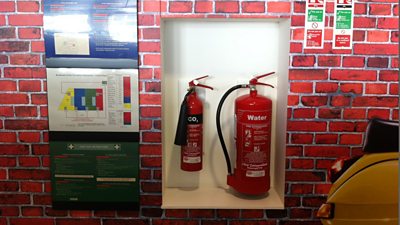 Fire Prevention PrinciplesThe most important element of Fire Safety is fire prevention
Fire Prevention PrinciplesThe most important element of Fire Safety is fire prevention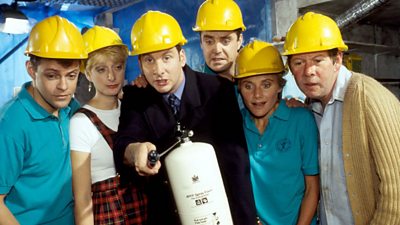 Fire Safety in 91�ȱ� BuildingsA summary of the way that fire safety is managed in 91�ȱ� Buildings and the individual’s role in the management of fire.
Fire Safety in 91�ȱ� BuildingsA summary of the way that fire safety is managed in 91�ȱ� Buildings and the individual’s role in the management of fire.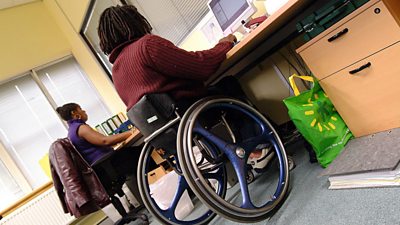 Personal Emergency Evacuation Plan (PEEP)Guideline describing the measures to take to ensure those who need it can get assistance to evacuate a premises during a fire or other emergency.
Personal Emergency Evacuation Plan (PEEP)Guideline describing the measures to take to ensure those who need it can get assistance to evacuate a premises during a fire or other emergency.
More from SSR
- Your platform to record accidents, risk assessments, assurance monitoring and inspections
- Safety Equipment StoresJust one number to call: 0844 800 8875
- 91�ȱ� Safety GuidelinesAn A-Z of 91�ȱ�'s Health and Safety Guidelines
- Safety Advice Line: 0370 411 0464 Email: safety@bbc.co.uk
Events guidance - key links:
- Exhibitions
- General Guidance
- Indoor Location Recce Checklist
- Outdoor Location Recce Checklist
- Major Incidents & Emergency Planning
- Marketing and Promotional
- Noise Exposure
- Planning and Management
- Responsibilities
- Responsibilities Form
- Laser Lighting Effects
- Strobe Lighting
- Temporary Stages and Rostra
Health topics - key links:
- (91�ȱ� network only)
- Contributors Fitness to Participate
- Display Screen Equipment (DSE)
- (91�ȱ� network only)
- First Aid and Welfare on Location
- International Travel - Risks & Health
- Manual Handling
- Mental Health: 91�ȱ�page
- (91�ȱ� network only)
- Personal Health and Wellbeing
- Pregnancy
- Psychological Trauma Support & Trauma Risk Management (TRiM)
- Tiredness and Fatigue
- Travel Health Contacts
91�ȱ� High Risk - key links:
- CBRN and Industrial Spills
- Covert Filming
- Crisis Management and Security Support
- Demonstrations, Protests and Crowds
- Disaster Coverage
- Door Stepping
- (91�ȱ� network only)
- (91�ȱ� network only)
- Public Order
- Safety Equipment Stores
91�ȱ� Journalism - key links:
91�ȱ� Productions - key links:
- Aerial Filming and Airfields
- Animals: Displaying and handling for performance
- Boats: Working on
- Children and Young People
- Driving
- Electrical Equipment and Systems
- First Aid and Welfare on Location
- Food Safety (Cooking and Catering)
- Remote Location Working
- Roads and Streets: Working by
- Security of Productions on Location
- Stunts
- Tiredness and Fatigue
- Unmanned Aerial Systems (UAS aka Drones)
- Vehicles: Recording in, from and around
- Working at Height: Mobile Elevating Work Platforms
- Working at Height: Tower Scaffolds
- (91�ȱ� Network only)
91�ȱ� Security - key links:
91�ȱ� Sport - key links:
About this site
This site describes what the 91�ȱ� does in relation to managing its health, safety and security risks and is intended for those who work directly for the 91�ȱ�.
It is not intended to provide instruction or guidance on how third parties should manage their risks. The 91�ȱ� cannot be held liable for how this information is interpreted or used by third parties, nor provide any assurance that adopting it would provide any measure of legal compliance. More information
Some links on this site are only accessible when connected to the 91�ȱ� network
